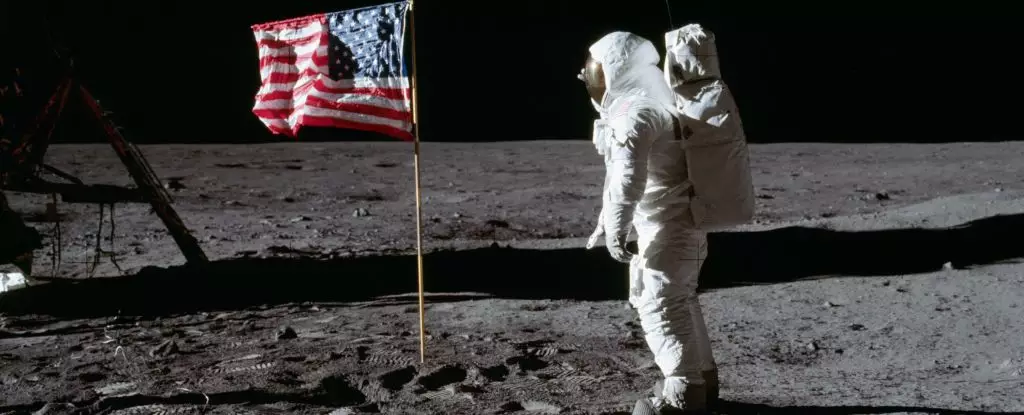The Moon, once pristine and untouched, is now marred by human presence. Over the past fifty years, we have left our marks on its gray and cratered surface. From abandoned equipment to crashed spacecraft, art installations, and even our own waste, the Moon bears witness to humanity’s exploration and exploitation. According to scientists, it is time to acknowledge that humans have become the dominant force shaping the geography of the Moon. In a groundbreaking paper, researchers argue for the declaration of a new epoch on the Moon, dubbed the Lunar Anthropocene, beginning with the landing of Russia’s Luna 2 spacecraft in 1959.
The concept of the Lunar Anthropocene mirrors the discussion surrounding the Anthropocene on Earth. Just as we analyze the extent of human impact on our planet, it is crucial to assess our influence on the Moon. Planetary geoarchaeologist Justin Holcomb from the University of Kansas explains, “The consensus is on Earth the Anthropocene began at some point in the past, whether hundreds of thousands of years ago or in the 1950s. Similarly, on the moon, we argue the Lunar Anthropocene already has commenced, but we want to prevent massive damage or a delay of its recognition until we can measure a significant lunar halo caused by human activities, which would be too late.”
Human beings possess a remarkable ability to adapt and thrive in various environments. Wherever we venture, we make ourselves at home, often leaving behind undeniable evidence of our existence. As we ventured into space, we carried our waste with us. The space surrounding Earth is now cluttered with our discarded debris. Similarly, when we send spacecraft to the Moon, we leave traces of our presence, whether in the form of abandoned equipment, garbage, or the impact of a spacecraft crash. Anthropologist Rolfe Mandel of the University of Kansas and geologist Karl Wegmann of North Carolina State University, along with Holcomb, highlight the importance of assessing and cataloging the impact of human activities on the Moon.
Holcomb emphasizes that cultural processes are surpassing the natural geological processes on the Moon. These processes involve the movement of sediments, referred to as “regolith.” Typically, meteoroid impacts and mass movement events contribute to these natural processes. However, the introduction of rovers, landers, and human presence significantly disrupts the regolith. Furthermore, with the ongoing space race, the lunar landscape is expected to undergo substantial transformations within the next fifty years.
In addition to assessing the impact of human activity, preservation is of utmost importance. The lunar cultural history, including footprints, flags, photographs, and other artifacts from crewed lunar exploration, holds immense historical significance. Holcomb views these imprints as an extension of humanity’s journey out of Africa and an essential milestone in our existence. He emphasizes the need to preserve this heritage, even as minimal efforts are being made to track and safeguard it.
Beyond the visible changes caused by human presence on the Moon, there are concerns about long-term damage to the lunar environment. Delicate resources such as water ice reserves and the tenuous exosphere could be at risk. As humans continue to explore the Moon, it becomes imperative to strike a balance between scientific progress and environmental preservation. We must be mindful of our impact and take steps to ensure that our activities do not irreversibly harm the Moon and its inherent natural wonders.
The Lunar Anthropocene highlights the undeniable influence of humans on the Moon. Through pioneering research and a growing awareness of our impact, scientists urge recognition of this new epoch. As we continue to venture further into space, it is crucial to approach exploration with responsibility and preservation in mind. The Moon, as a celestial neighbor, deserves our respect and thoughtful stewardship.



Leave a Reply